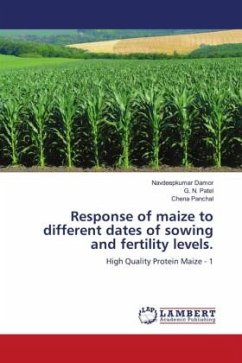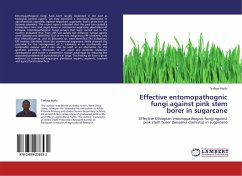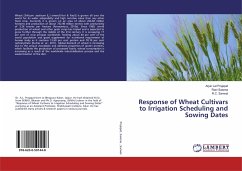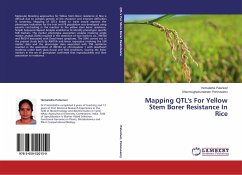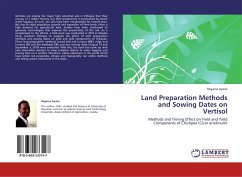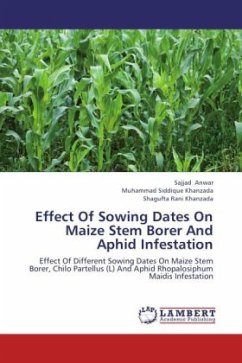
Effect Of Sowing Dates On Maize Stem Borer And Aphid Infestation
Effect Of Different Sowing Dates On Maize Stem Borer, Chilo Partellus (L) And Aphid Rhopalosiphum Maidis Infestation
Versandkostenfrei!
Versandfertig in 6-10 Tagen
32,99 €
inkl. MwSt.

PAYBACK Punkte
16 °P sammeln!
Maize (Zea mays L.) is the third important cereal and cash crop of Pakistan and World.Maize grains are rich source of carbohydrates, protein, oil and minerals for humans and animals alike. Starch based ingredients have significant value in textile and paper industries in the country. Pakistan is one of the important suppliers of maize starch in the world.The major insect pests that attack the maize crop includes maize aphids, cutworms, stem/shoot fly, root worm and stem borer.The maize stem borer Chilo partellus Swinhoe, is the most serious one. The young larvae first feed on leaves making a f...
Maize (Zea mays L.) is the third important cereal and cash crop of Pakistan and World.Maize grains are rich source of carbohydrates, protein, oil and minerals for humans and animals alike. Starch based ingredients have significant value in textile and paper industries in the country. Pakistan is one of the important suppliers of maize starch in the world.The major insect pests that attack the maize crop includes maize aphids, cutworms, stem/shoot fly, root worm and stem borer.The maize stem borer Chilo partellus Swinhoe, is the most serious one. The young larvae first feed on leaves making a few shot holes and then bore their way downwards through the central whorl, reaching the growing point of the maize plant. As the whorl open more shot holes become visible, indicating an earlier attack and the plant also shows dead hearts.Maize Aphid Rhopalosiphum maidis (Fitch)is attack Young leaves of Maize, Sorghum, Barley, Wheat, and other Gramineae Crops and Tobacco,etc.The leaves may become mottled and distorted. Inflorescenses can become sterile. New growth may remain dwarfed. Heavy attacks cause the plant to wilt and die. These aphids are known to be a vector of virus diseases.





